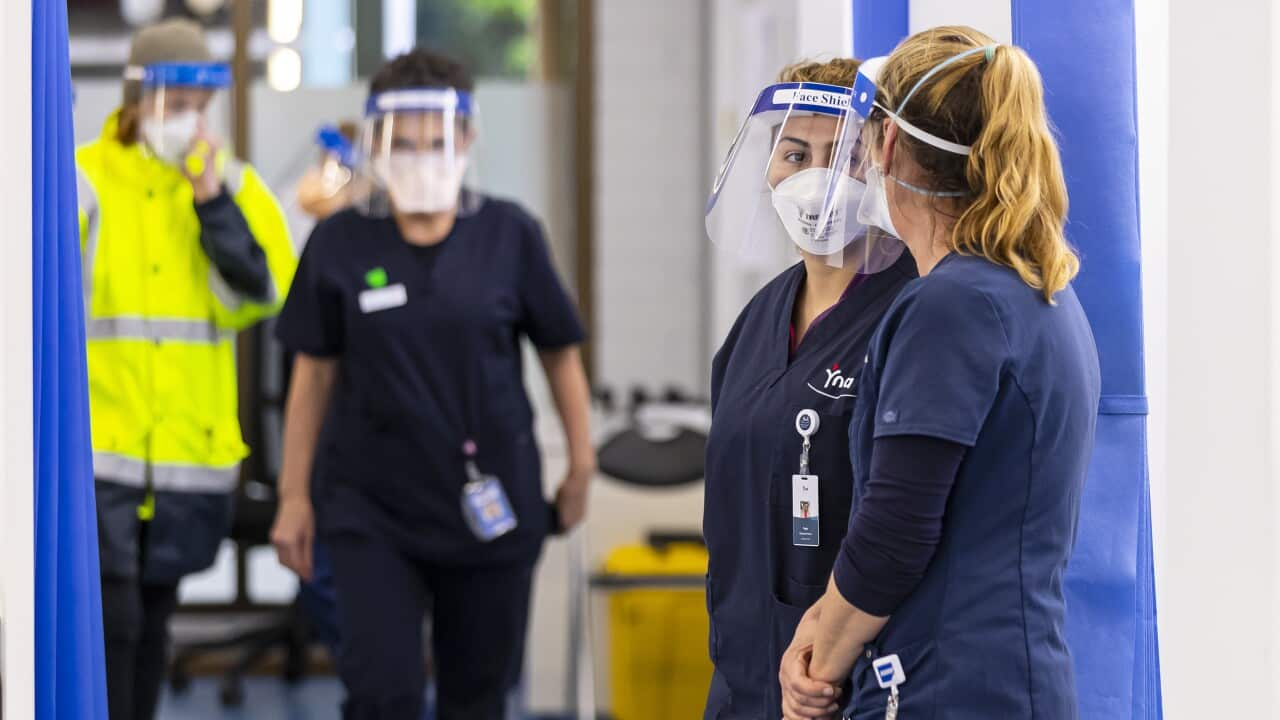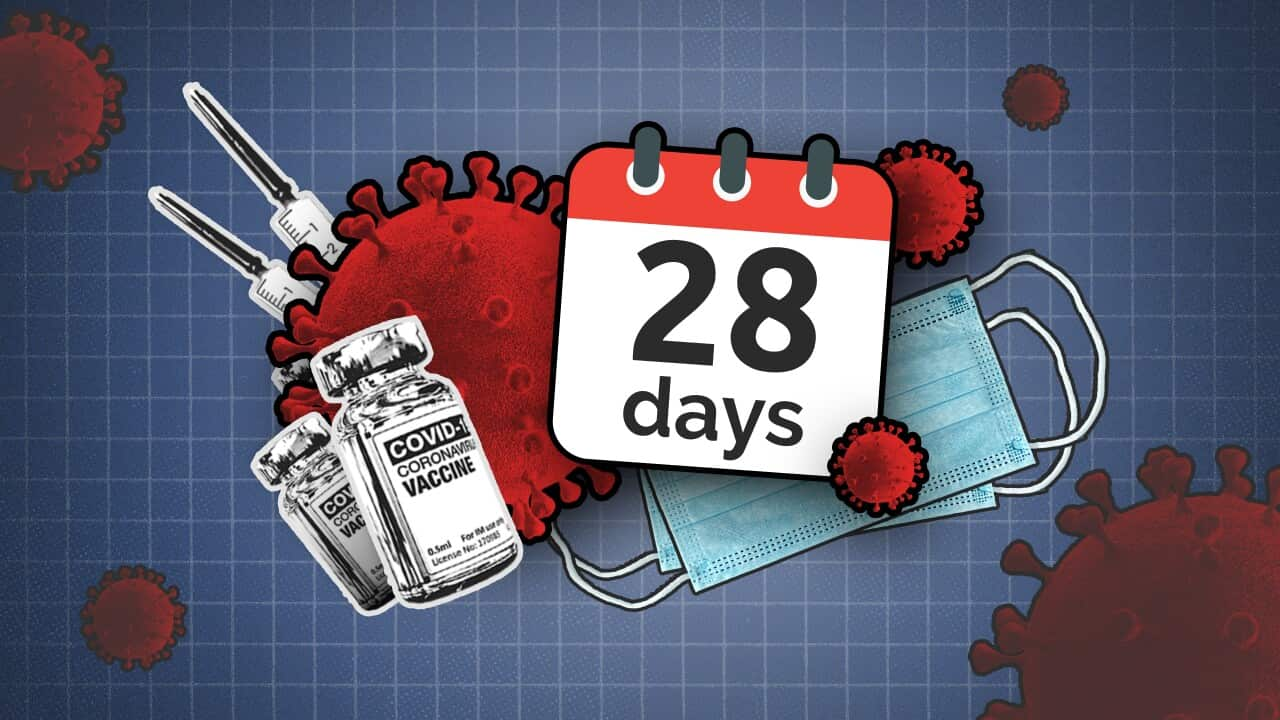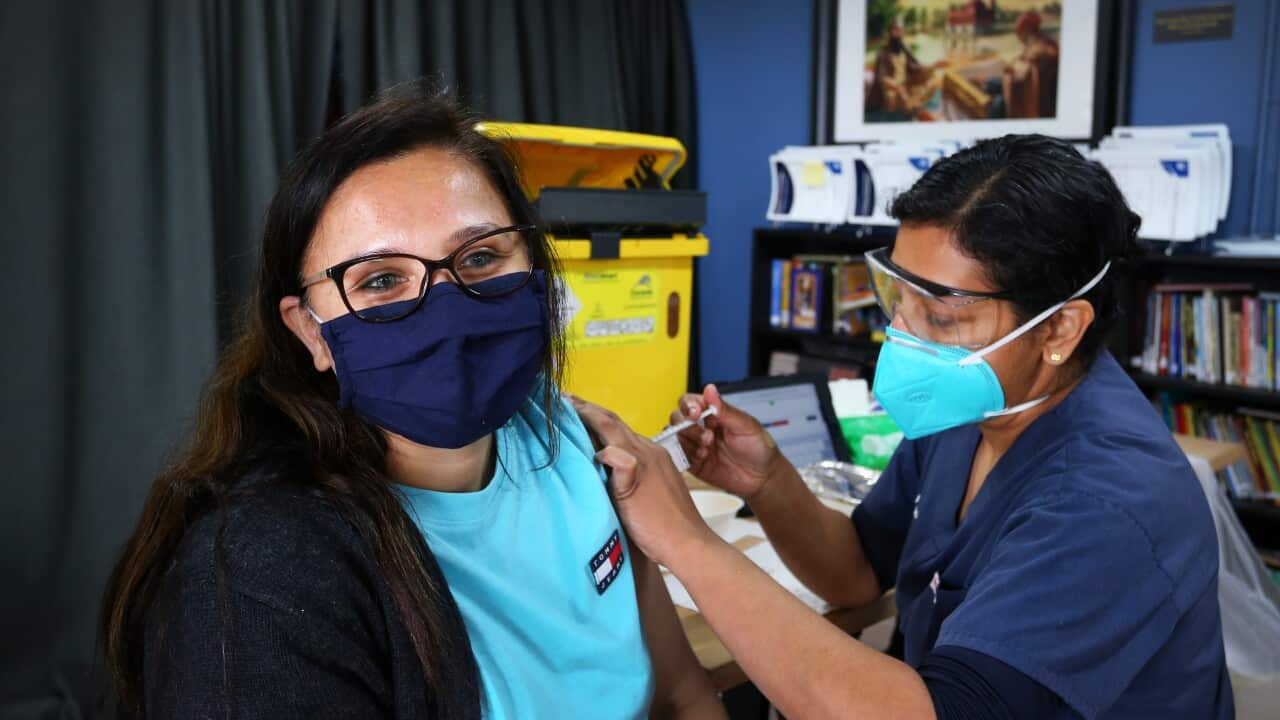Key Points
- Pandemic payments have been reinstated as experts warn of a new wave
- What is Australia's COVID-19 situation now?
Prime Minister Anthony Albanese says a "change in circumstances" has prompted a shift in Australia's COVID-19 policy.
As part of that change, pandemic leave mask wearing is being encouraged, and a temporary new telehealth item has been created.
In recent weeks, experts have been warning of a new COVID-19 wave. So how severe could it get? And are case numbers across the country on the rise?
Is Australia experiencing its biggest wave?
Last Wednesday, Health Minister Mark Butler said there were "millions" of cases projected in the coming few weeks. Mr Albanese said on Saturday the current wave was projected to peak in August.
When it comes to the severity of the wave, Professor Catherine Bennett, chair of immunology at Deakin University, told SBS News it was too early to gauge the full scope.
"We're not quite sure with the re-infection risk what will happen with this wave, particularly as we're already seeing the BA2.75 [a new version of the Omicron variant] appearing at the same time," she said.
"It might depend on whether we have a mix of variants and a surge ... that might just increase re-infection, which can increase your total number of infections.
"If you're just looking at the profile for the same number of cases in hospital, back in January [compared] to now, there are less people in ICU [intensive care unit], which is good news."
Professor Adrian Esterman, chair of biostatistics and epidemiology at the University of South Australia, told SBS News he does not believe this wave will reach the level of BA.1 infections experienced last summer.
"The worst we saw was BA.1 [which] at its peak was 100,000 cases a day. We're not seeing anything like that," he said.
"At the moment, we're still in the range of 40,000. So I would actually be quite surprised if we hit 50,000 cases a day."
What impact will our vaccination rate have?
According to the most recent government figures, almost 14 million people have had three or more doses of a COVID-19 vaccine, representing 70.9 per cent of the eligible population.
Over three million people have had four doses.
However, experts have warned the BA.4 and BA.5 variants - and potentially the emerging BA2.75 - remain highly transmissible, particularly when many people's vaccine efficacy or their immunity from having received COVID-19 has waned.
Nancy Baxter, Head of the Melbourne School of Population and Global Health at the University of Melbourne, has said the BA.4 and BA.5 are "successful variants" in averting the immune system.
"[The sub-variants] are worse actors in terms of being more able to get around our immune system and they're more transmissible, and they're easier to catch, even if you've had a vaccine or had COVID," she
"We're creating an environment for the virus that it can it can spread, we're less protected and we have a more infectious sub-variant".
But Professor Bennett said vaccines could be beneficial in reducing the chances of severe illness.
"We are in a better position immunity-wise, that helps protect from serious illness even if it doesn't stop re-infection with these variants," she said.
What is the federal government doing?
On Saturday, Mr Albanese announced that pandemic leave payments for COVID-hit workers will be reinstated until at least 30 September, along with a national crisis payment for anyone with the virus and in severe financial hardship.
The cost of extending the payments will be split 50:50 between the federal government and the states. The total cost is projected to reach $780 million.
The prime minister also announced the creation of a temporary telehealth item allowing Medicare to cover long consultations by GPs to prescribewhich will remain in place until the end of October.
He said national cabinet will continue to meet every two to three weeks until at least the end of September, “to make sure that we’re hearing the updated reports from the Australian Health Protection Principal Committee (AHPPC) and to respond as need be, to make sure that our approaches are consistent so that people can be clear about the messages which are out there.”
What is the situation in hospitals?
Following the government's announcement, the Australian Nursing and Midwifery Federation (ANMF) said the payments would support vulnerable workers to follow public orders and isolate if they contract COVID-19 or need to care for others with the virus.
"We are now facing a winter wave of COVID infections, which has already seen a worrying spike in the rates of hospitalisations," ANMF Federal Secretary Annie Butler said on Saturday.
"And it’s therefore crucial that our federal, state and territory governments work with us to assist our depleted health and aged care workforce – which has been crushed by the impacts of the pandemic."
Professor Bennett said the combination of cold and flu season and COVID-19 cases created a "triple whammy" for hospitals and medical professionals.
"You've got workers off, you've got the big numbers we have in hospital anyway, you've got people in there for COVID-19 and you've got people in there with COVID-19, so you've still got to manage infection control and we've already got a tight workforce," she said.
"It impacts right across workplaces."
What happens next?
Additional measures such as reintroducing mask mandates and extending a have been discussed, but the government has not confirmed any plans.
Instead, the prime minister said he and state leaders agreed on taking a consistent national approach to health messaging, with Australians urged to mask up indoors, practise good respiratory hygiene and test and isolate when symptomatic.
"There will be less spread if people take more action - if more people wear masks, if more people get vaccinated," Mr Albanese said.
Professor Esterman said he would support a mask mandate.
"Even though our health system is under incredible strain at the moment, it can probably manage for the next two or three weeks ... but if things got any worse, then I think governments would have to start reintroducing some public health measures," he said.
"The least they could do is to have much better messaging to the general public about why face masks are so important, and why having a third booster shot is so important because we still don't have a very high percentage with a booster shot."
What are the current numbers around the country?
According to data from the federal health department on Monday, about 39,046 new COVID-19 cases were reported across the country in the 24 hours prior to the most recent report. Just over 5,000 people with the virus are hospitalised; 155 are in ICU and 37 are currently ventilated.
On 11 July, there were about 32,160 cases recorded.
On June 18, there were about about 19, 600.
During the summer wave, on 14 January, about 155,370 new cases were reported.
During the current wave, the number of people in hospital in South Australia with COVID-19 has surged to record levels as the new Omicron variants continue to take hold across the state.
SA Health on Monday said 306 people were in hospital with the virus, an increase of more than 70 since Thursday last week, and the first time the number has gone above 300.
And in Victoria, public hospitals will be topped up with an extra 400 health workers to combat rising hospitalisations and staff absenteeism.
Since 22 June, the state has experienced a 99 per cent rise in people in hospital with COVID-19, a 60 per cent increase in COVID-related ICU admissions and a 47 per cent spike in workforce furloughs.
More than 10,000 Victorian health staff were off work sick over the first week of July alone, according to the state government.
With AAP.














